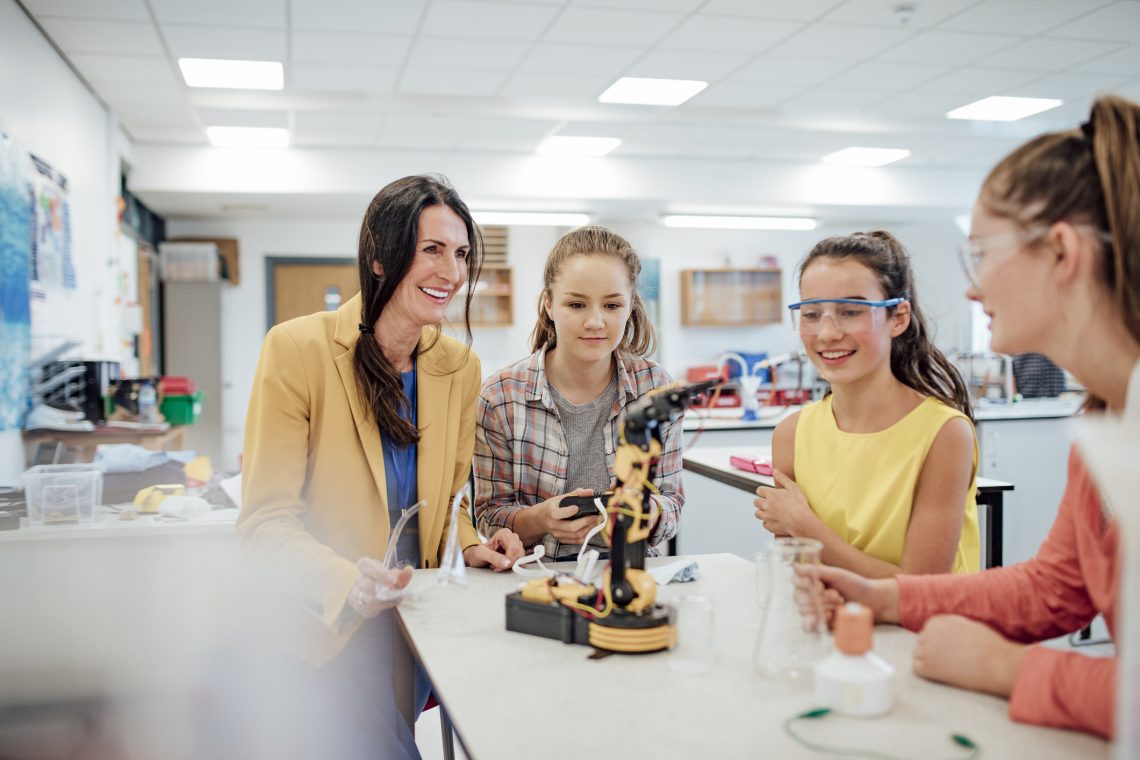Early education is critical to increasing the number of women in engineering, a new Engineering for Australia Taskforce report has found.
Unlike professions such as law and medicine, engineering hasn’t come close to achieving gender equality across its industry. Despite women making up 47 per cent of all employed people in Australia, in engineering, they only make up 12 per cent of the workforce and 16 per cent of students studying at universities.
“If we want more women to choose higher education in engineering, we need more girls to engage with engineering,” said the Australian Government Women in STEM Ambassador Professor Lisa Harvey-Smith, a supporter of the Engineering for Australia Taskforce report.
For that to happen, the report found that teachers and early educators require support from industry, government and the wider education sector to foster girls’ interest in engineering.
Educating the educators
Engineering affects the whole economy, which according to Engineers Australia’s Chief Engineer and Taskforce Chair Jane MacMaster FIEAust CPEng is one the biggest benefits of the profession.
“It almost doesn’t matter where your area of passion or interest lies, there’s certainly an engineering role there for you,” she said.
That role could include engineering in the fields of civil, humanitarian, aerospace, biomedical, water, mechatronics, renewable energy and more.
But this broadness causes confusion among the nation’s educators. While engineering has been included in the national curriculum since 2015, Harvey-Smith believes universities need to transform how they are training teachers in engineering methodology so the ‘E’ in STEM doesn’t get lost in maths and science.
“I think it’s really important that educators not only get the support they need to understand engineering careers, [but also to understand] the breadth and depth of those careers and what they mean for the future.”
What is clear from the report is the engineering sector needs to get better at “selling itself” and sharing stories about the role engineers play in solving society’s problems.
“While people engage with the work of engineers on a minute by minute basis — whether it’s an alarm clock or transportation, or a laptop or smart device — it’s hard for people to say what engineers do,” MacMaster said.
“As a result, teachers and students don’t associate what they’re doing as ‘engineering’. Girls might not realise they have aptitude in this field, and that these skills create opportunities for a rewarding career.”
Rethinking how engineering is taught in schools
As climate strikes across the country have shown, school students of all ages and genders are more engaged and exposed to the world’s challenges than ever before.
“Children are really engaged with the world. They care about climate change, food security and wildlife habitats. We need to pitch ideas around solving those problems within the classroom,” said Harvey-Smith.
Currently, the national curriculum provides third and fourth graders the opportunity to explore engineering principles behind materials and how it affects the behaviour of a product, but for Harvey-Smith it needs to be taught in a way that demonstrates that problem-solving is fundamental to engineering and solving challenges children care about.
“How can we stop animals getting hit by cars on the highway? Well, we can create engineering solutions to that.”
One way that Harvey-Smith’s office is helping drive awareness of engineering careers is through their Future You site, designed for primary school students to explore a career in STEM.
“We need to nurture curiosity early on in childhood education. It’s not something they should only be thinking about in Year 11 and 12. It’s way too late,” said MacMaster.
Monash University Dean of Engineering Elizabeth Croft agrees: “There is a critical window in early childhood education, as girls form their identity and ideas about what they’re capable of. We must all work together — industry, government and education — to ensure girls’ interest in engineering is recognised and nurtured.”
The engineering sector has a role to play
While the Workplace Gender Equality Act 2012 requires non-public sector employers with 100 or more employees to submit a report to the Workplace Gender Equality Agency, MacMaster believes the sector has a larger role to play to attract more women in engineering.
“The problem with quotas and targets is that to find women to meet those targets, we’re taking them from elsewhere. We’re just shifting the burden from having no women in senior leadership to having no women in middle management.
“We need to take a whole-pipeline approach and really nurture our younger engineers, particularly our female engineers.”
That includes industry providing internships for women and men, and investing in supportive graduate programs designed to nurture engineers during their first crucial years.
“It’s a bit harder for industry to be involved in the early part [school years] of the pipeline, but if there is an opportunity to speak at career expos and ensure the engineering voice is heard, I think that would be helpful,” said MacMaster.
“Engineering is very practical. It’s very creative. It’s very hands-on,” said Harvey-Smith. “If that is taught as a package, which is relevant to young people’s interests, then I think we can get to a place where young girls can really see themselves in engineering.”



